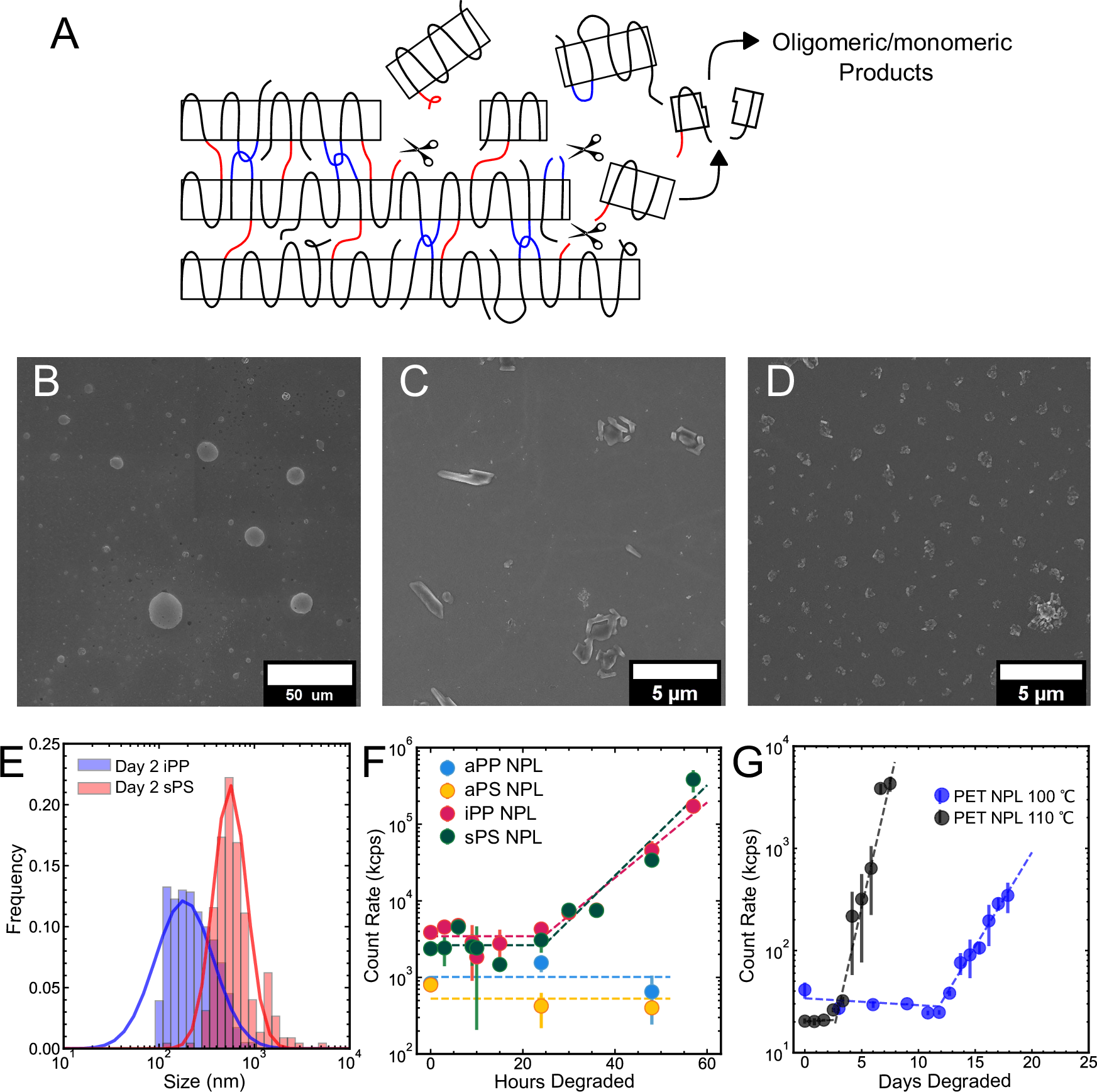2025-04-07 コロンビア大学
<関連情報>
- https://www.engineering.columbia.edu/about/news/researchers-discover-why-plastic-sheds-dangerous-fragments
- https://www.nature.com/articles/s41467-025-58233-3
半結晶性ポリマーからの静止ナノプラスチック形成のメカニズム Mechanism of quiescent nanoplastic formation from semicrystalline polymers Nature Communications Published:28 March 2025 DOI:https://doi.org/10.1038/s41467-025-58233-3

Abstract
Polymers are known to spontaneously produce microplastics (sizes 1 μm – 3 mm) and nanoplastics (10 nm – 1 μm). Still, the mechanisms by which environmentally-triggered Å-level random bond breaking events lead to the formation of these relatively large fragments are unclear. Significantly, ≈ 70% of commercial polymers are semicrystalline, with a morphology comprised of alternating crystalline and amorphous layers, each tens of nanometers thick. It is well-accepted that chain scission events accumulate in the amorphous phase. We show that this leads to mechanical failure and the concurrent release of particulate nanoplastics comprised of polydisperse stacks of lamellae even under quiescent conditions. Noncrystalline analogs, which do not have a well-defined microstructure, do not form nanoplastics. While the amorphous phase of the semicrystalline nanoplastics continues to degrade, crystal fragments do not, and hence, they temporally persist in the environment. These results stress the critical role of polymer microstructure and fracture mechanics on particulate nanoplastic creation.



